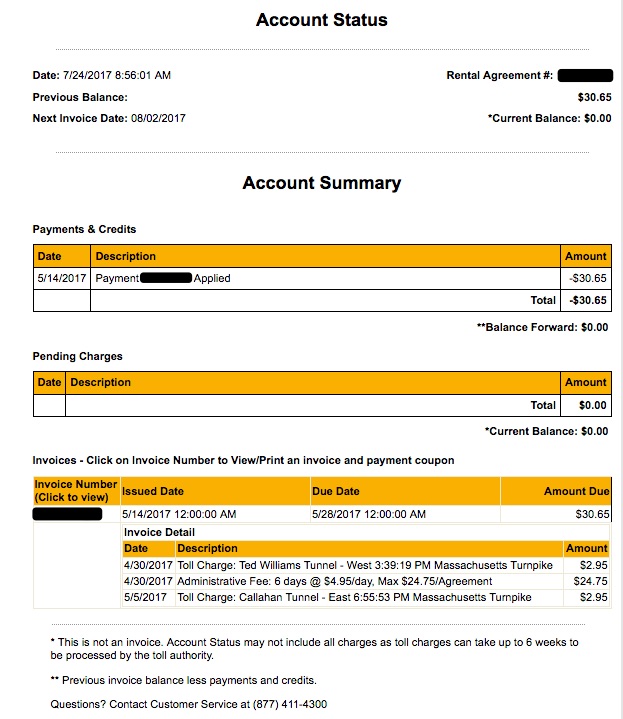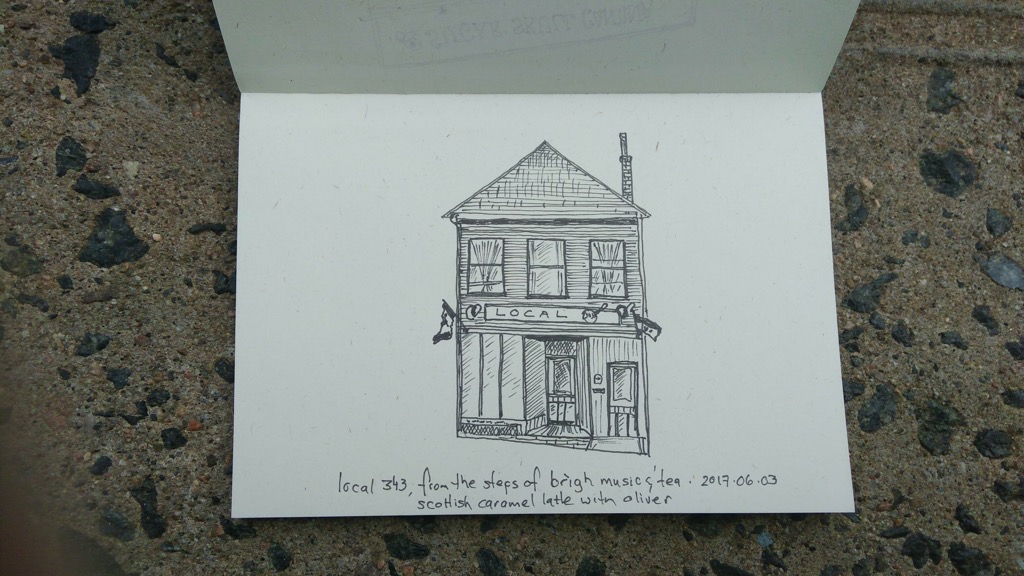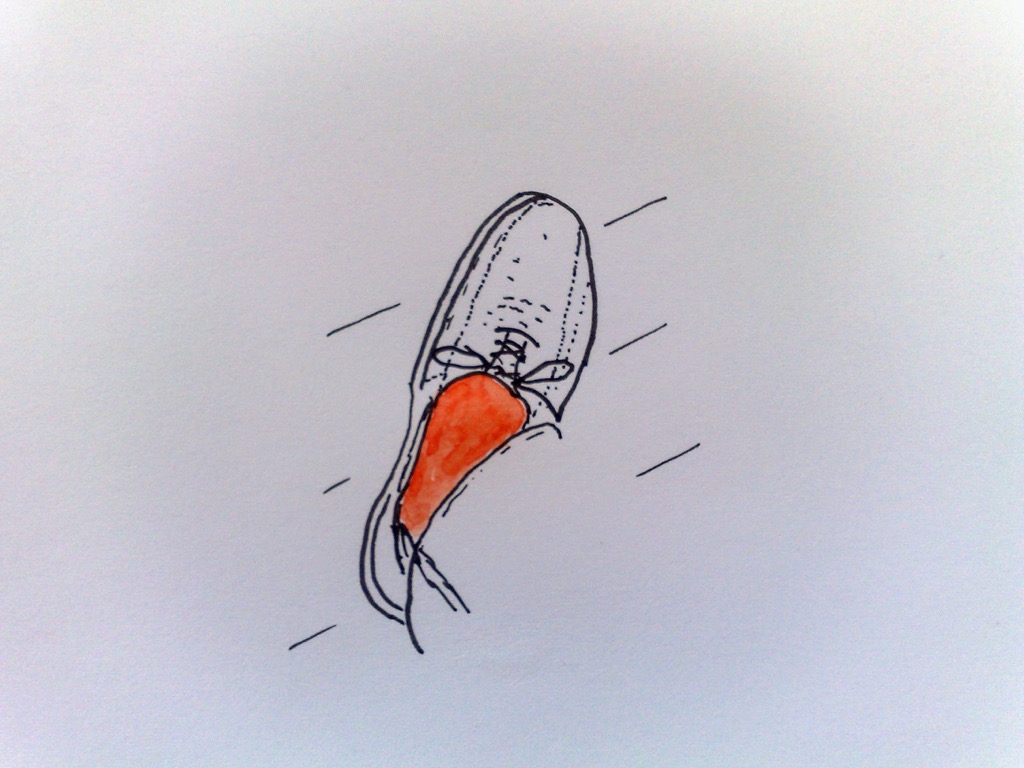If circumstances and seasons were different, I’d be all over this Finnish letterpress workshop, hosted on the Åland Islands next month, hosted by Ahvaland Press.
Which led me to learn of the Åland Islands dispute:
The Åland Islands dispute was one of the first issues put up for arbitration by the League of Nations on its formation. The Åland Islands’ population’s demand for self-determination was not met and sovereignty over the islands was retained by Finland, but international guarantees were given to allow the population to pursue its own culture, relieving the threat of forced assimilation by Finnish culture as perceived by the islanders.
I’m all about letterpress and self-determining islands.
At this hour I should be settling in for two hours of the Hon. David MacDonald Experience out at UPEI.
But I am not.
I decided earlier this morning that, rather than trying to catch the 7:30 a.m. bus up University Avenue, I’d take things a little easier, linger a little longer over my coffee and granola, and catch the 7:45 a.m. bus instead. I’d still get there in time for the 8:00 a.m. start, but I wouldn’t be frazzled. Such is the beauty of the every-15-minutes-up-the-avenue bus schedule.
Which is why I arrived at the Confederation Centre of the Arts bus stop at 7:40 a.m., ready to start my day.
Shortly thereafter came Bus No. 3, Bus No. 4, and the bus to Summerside.
But no Bus No. 1.
It turns out that there is no Bus No. 1 at 7:45 a.m.
I could have gone back home and taken the car, or just waited for the 8:00 a.m. bus and been a little late. But the summer heat and sense of despair at the irregularity of the universe meant that I didn’t have it in me to climb over those mountains.
And so, ironically, I will miss How can we create a habitable, thriving and just future?, the topic of today’s discussion.
Despite my skittishness about revealing all to the Borg, I’m an enthusiastic user of both Google Maps Location History and Google Photos. And yesterday I found a setting that unites the two, populating my location timeline with the photos I took along the way. Which is how, by happenstance, these two photos of Province House, under restoration, ended up next to each other, roughly in the right position.

I was in Boston on business in late April, and rented a car from Hertz at Logan Airport.
I’ve been making this trip several times a year for more than 20 years, and I’m used to travel weirdness leaving the airport: I survived the years of the Big Dig after all. New this trip was that I was no longer able to pay the toll for the Ted Williams Tunnel with cash: it’s an all-electronic system now, and my only option was to use the E-ZPass transponder in the rental car.
Hertz, like most other rental companies with cars in E-ZPass states, uses a third-party company called PlatePass to manage its in-car transponders, and the fees associated with this amount to extortion; here’s how the Hertz website explains the charging:
How Much Does It Cost?
If you use PlatePass®, you will be charged a $4.95 service fee for each day of the rental including any days on which PlatePass® is not used, up to a maximum of $24.75 per rental, plus incurred tolls at the Toll Authority’s cash toll rate or highest undiscounted toll rate. PlatePass LLC will automatically charge the credit card used for the rental, typically one-to-three weeks after the rental closes. Processing of charges can at times take up to a month or more.
Now read that again: it actually reads “for each day of the rental including any days on which PlatePass® is not used.”
Which is to say that, for me, who needed the transponder twice, once to leave the airport via the Ted Williams Tunnel and once to return to the airport via the Callaghan Tunnel, rather than being billed $1.75 and $1.50 for the tolls, respectively, I was billed $30.65:

This was because I was also billed $4.95 a day for the 6 days I had the rental car, including the days I was miles from any toll road. And, in addition, I was charged the cash rate for the tolls ($2.95). So what should have been $3.25 in tolls became $30.65 in tolls.
Other than taking a circuitous route out of Logan, there’s no way to avoid tolls, but fortunately there’s a non-extorting way around this: get your own E-ZPass.
You can sign up for one online, and it’s free (although you have to deposit at least $25 US to be able to request one; this will be applied against future tolls). Although you’re asked to specify your car make, model and license when you sign up, you’re allowed to also use the transponder in your rental car, as explained here.
I’ve just signed up, and my E-ZPass should arrive before I’m next scheduled to travel to Boston at the end of August. I figure this will save me about $200 Canadian a year.
Six years ago, at the tail end of a trip to Europe, Oliver and I went cycling on the railway in Skåne, Sweden.
As I was bopping through the filesystem on my recently-resuscitated Nokia N95, I found this very short podcast we recorded, notable not so much for our insights as for the sounds of the railways. And for Oliver’s emphatic rail sound effects.
(Also, I’m pretty sure I didn’t pronounce Skåne correctly).
My replacement Nextbit Robin arrived today, in “Midnight” blue, as requested, for a change of pace. I’d forgotten that one of the things that drew me to the brand was its sense of humour. Like these labels on the cellophane wrapper for the phone:


While I sat sketching Province House last night I became aware that a drone was flying close overhead.
Given that Province House is within the 5.5 km radius around Charlottetown Airport where Transport Canada prohibits recreational drones, and given that it was flying over me, this seemed like something that needed reporting.
I don’t like to be a narc, but I also don’t want drones dropping on my head (to say nothing of drones interfering with airplanes), so I went looking for a way to report this.
Turns out that Transport Canada has a handy Report a Drone Incident form online: you give as many details about date and time, location, and the nature of the drone, and send it off.
As the operator of last night’s drone wasn’t obvious, it’s unlikely that anything other than a data point will come from this. But if nothing else that data point will help to identify problematic patterns.
Remember when my Nextbit Robin mobile phone crashed to the floor of a VIA Rail car while I slept?
Well, rather than using this as an opportunity to buy a brand new phone, I took Nextbit up on its offer to replace the phone with a new one for $99. This process was conducted professionally, but required me sending back the smashed phone to Nextbit HQ in California, waiting for it to be examined, paying a PayPal invoice for the replacement phone, and then waiting for the replacement to be couriered to me. It just arrived, and it’s waiting for me at home.
In the meantime I needed a way of staying in touch with the people and machines in my life, so I took my old Nokia N95, purchased nine years ago, out of retirement, and I’ve used it as my everyday phone for the last two weeks.
It’s a testament to the robustness and backward-compatibility of the mobile telephone network that I was able to simply stick my SIM card (with a snap-on enlargener to accommodate the older full-size SIM format) into the N95 and, presto, it worked just like it did in 2008.
Well, not just like it did in 2008.
I could still make and receive phone calls and text messages, and sort of connect to wireless Internet. But it turns out that the world’s gone SSL in the years since, and the ciphers built into the Nokia web browser are old enough that the phone was unable to establish a connection with most websites other than Google. So I couldn’t surf the web. Or upload photos, or check my email.
In other words, it was a credible recreation of early-millennium mobility. And I loved it.
Not having the ability to do any of the distracting things that our modern phones allow us to do meant that I was forced to ruminate in the coffee line rather than check the CBC headlines or refresh my Instagram likes.
And the experience showed me the truth of the recent study Brain Drain: The Mere Presence of One’s Own Smartphone Reduces Available Cognitive Capacity:
Results from two experiments indicate that even when people are successful at maintaining sustained attention—as when avoiding the temptation to check their phones—the mere presence of these devices reduces available cognitive capacity.
As tempted as I am to stay within this peaceful garden of distractionless freedom, there were just two many practical downsides to not having my data at my mobile fingertips to make this a sustainable lifestyle.
I need to be able to connect to borked servers, to look up phone numbers, to get urgent Slack messages, to use Google Maps, to have 1Password at the ready.
While I was able to stumble through life for the last two weeks without any of this, doing so was only possible through a combination of borrowing others’ gear (I had to borrow Hon. David MacDonald’s iPad on Tuesday morning to do some emergency online banking so that Oliver could pay for art class), and using my clunky old iPad 2.
So as much as I’m mindful that my cognitive capacity is going to suffer, this afternoon I’ll dive back into the smartphone waters. Wish me luck.
Careful readers may have noticed that I’ve been dropping the occasional sketch into the blog (and into my erratic Instagram feed).
This all started back in March with a sketch of Oliver and Ethan. As I explained briefly then, I was sent off down this road by an online course called How to Draw Without Talent that I found my way to via the Dan Misener-helmed Work in Progress podcast (an estimable effort in its own right; you should subscribe).
Beyond the dulcet tones of Dan Misener advertorially singing its praises, the thing that drew me to the course was the “Without Talent” part.
I have long thought myself without talent for sketching, drawing, painting, and related arts because I was so abjectly unsuccessful at them during my public school years. I’m pretty sure that there was an implicit “we understand you have no talent, so just try your best” vibe from my public school art teachers that only reinforced this.
The capper was when I took my portfolio to Portfolio Day at the Ontario College of Art in Toronto in the late 1980s. I did this not because I thought myself talented in the “fictional fine arts,” but because I’d cultivated an interested in graphic design and typesetting and was seeking to further this. The reviewer of my portfolio, from the Rhode Island School of Design as it happens, opened my portfolio, filled with posters, newsletters, broadsides, and booklets, and their first question was “where are your drawings?” At which point I was forced to admit having no talent in this regard and thus no drawings. Their reply was something along the lines of “your work is intensely typographical.” Which, I think, was a way of saying “you have no talent” in as gentle a way as possible.
Suffice to say that I did not pursue a fine arts education. And my sense of having no talent was cemented.
It’s for this reason that taking a course with “Without Talent” in the title was a beckoning door for me. I figured that, for $39, what did I have have to loose.
And so, in a hotel in Halifax on a cold March night, I payed my tuition, got over my “gross misuse of the letter K” issues with the Skool spelling, and started to draw.
And I’ve been drawing every day since.

I’ve drawn my house and my family and my family’s houses. I’ve drawn churches and buildings and many, many cups of coffee. I’ve drawn flowers and hair brushes and Ethan the Dog.
I have no delusions of having talent, but I’ve decided, goaded on by the excellent tutelage of instructor Danny Gregory, to set that aside as a reason for not taking the pen out for a ride.
The effect has been transformative: while my degree of talent may not have changed, my eyes certainly have. I now look at buildings–or people, or hair brushes, or dogs–and see things I’ve never seen. This is a hard thing to describe with any degree of accuracy, but I feel, sensorily, as though I am able to taste food for the first time.
As I wrote in a fan letter to Danny Gregory:
And here’s the revelation: the source code for sketching is all right there. Staring me in the face. Which isn’t to say that it’s easy nor automatic, but it is, much to my surprise and delight, possible.
I’ve come to realize another important thing: having lived with a truly-talented artist for the last 26 years, I’d ceded the role of artist in the relationship to her, carving out my creative identity through typographic means. I’d always thought, subconsciously, that daring to do anything more overtly artistic would be like Julia Child’s husband cooking supper.
It turns out that the great thing about art is that there’s enough of it to go around: anyone can do it, and one person’s doing of it doesn’t detract from another person’s doing it.
My father asked me, on a recent visit, what Catherine thinks of my work. I told him that I didn’t know (other than her generous habit of Instagram favouriting). But it doesn’t really matter in any case, as I’ve also discovered that sketching is a pursuit that, like so many other things, has more to do with the doing than the consuming.
This is all a very long-winded way of saying (without any incentive other than wanting to share) that Learn to Draw Without Talent is on sale for $23 US this week. If, like me, your grade 7 art teacher made it clear that you were an art-loser, and you want to get over that, I cannot recommend this as a gateway drug more highly.
Let me also take this chance to recommend Danny Gregory’s books An Illustrated Journey: Inspiration From the Private Art Journals of Traveling Artists, Illustrators and Designers, An Illustrated Life: Drawing Inspiration From The Private Sketchbooks Of Artists, Illustrators And Designers, Everyday Matters and A Kiss Before You Go: An Illustrated Memoir of Love and Loss. The latter two are powerful ruminations on life’s challenges and have been enormously helpful to me in a way that transcends their visual inspirations.
I’m so happy I found my way to this pursuit; it makes me wonder what other assumptions about my limitations I’ve internalized. So much more to learn…
Clarks shoes, orange socks, new trousers. An early morning sketch at Receiver Coffee on the waterfront.

 I am
I am